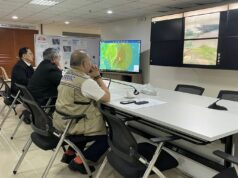Bataan nuclear power plant can be revived for manufacturing
THE PHILIPPINE Nuclear Research Institute (PNRI) said the Bataan nuclear power plant, which cost the country billions of dollars but was never fueled to operate, can still be revived and can help push the development of the country’s manufacturing sector further.
“We cannot go into manufacturing because of high power costs. And the cheapest costs, and actually walang emission is nuclear,” Department of Science and Technology’s new PNRI Director Carlo A. Arcilla told reporters last week.
Under the Philippine Development Plan 2017-2022, the country is aiming for a 7% to 8% GDP growth with the manufacturing sector, aside from services and agriculture, having the biggest potential to drive growth.
Mr. Arcilla said the only concern with nuclear energy is nuclear waste, and this could be addressed by clearly setting the terms before starting the operation.
He noted that the Bataan plant is the same as the “exact working model” of one in South Korea, referring to the Kori Nuclear Power Plant in Busan.
However, its 40-year-old Kori No.1 facility, Korea’s first and oldest nuclear reactor, halted operations in June as a first move towards permanent shutdown.
This, in reaction to South Korean President Moon Jae-in’s directive to halt the construction of new nuclear plants, as well as the extension of the lifespan of existing ones, in a bid to pivot the Asian nation away from nuclear power generation.
The revival of the Bataan nuclear power plant will be “a political decision,” Mr. Arcilla said.
“I will wait for directives. I do not want to promote nuclear energy on my own. Part of the job will be regulation… Now that they’re discussing options, so they’ll ask my opinion. I’ll write what my assessment is,” he said. — Janina C. Lim



